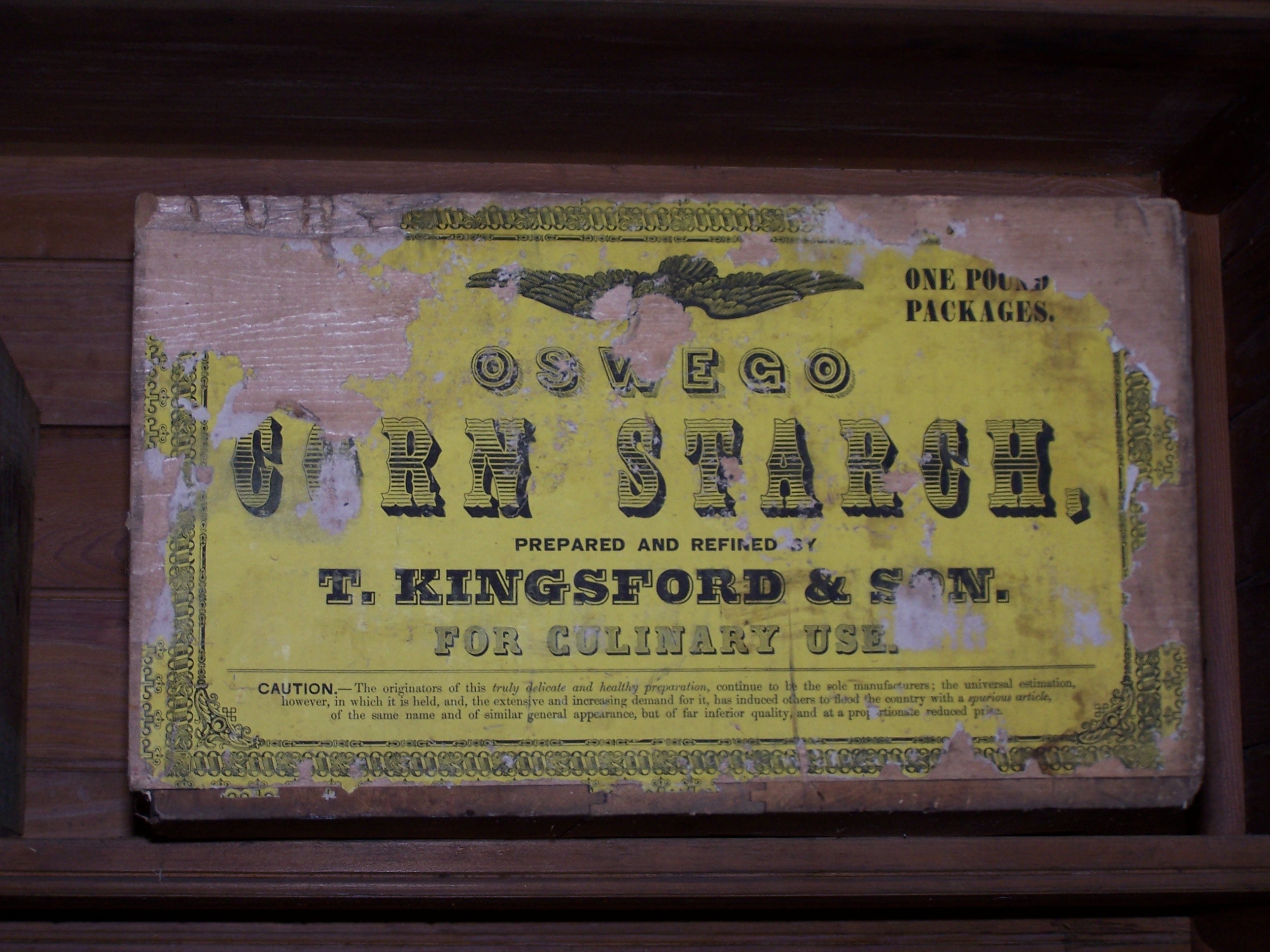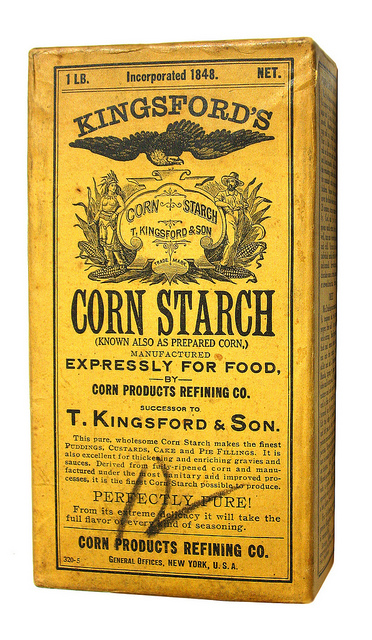Newsletter Detail
 During the restoration of Kirby Camp in the summer of 2002, several items were discovered. A few small shelving units were moved to the front porch as work began. Careful inspection of the units revealed that the shelves were in fact crates that had been nailed together and covered with oilcloth. As the oilcloth was carefully removed, a bright yellow paper label displaying T. Kingsford & Son Corn Starch affixed to the wooden box was exposed.
During the restoration of Kirby Camp in the summer of 2002, several items were discovered. A few small shelving units were moved to the front porch as work began. Careful inspection of the units revealed that the shelves were in fact crates that had been nailed together and covered with oilcloth. As the oilcloth was carefully removed, a bright yellow paper label displaying T. Kingsford & Son Corn Starch affixed to the wooden box was exposed.
Kingsford & Son started in the corn refining business in 1848. Their most popular product was Silver Gloss cornstarch. The business started in Oswego N. Y., and by 1880 had grown to become the largest corn refinery in the world. Starch factories sprouted up throughout the United States, growing to 140 refineries, more than doubling the production of corn starch between 1869 and 1904. The Oswego factory produced 35 tons of starch per day and employed almost 1,000 people on 17 acres. T. Kingsford & Son had everything needed to complete the entire process of refining the corn right down to the packaging on-site. The factory included a foundry, machine shop, fire brigade and facilities to produce wooden and paper boxes.
The Oswego-based factory is credited as being the first U.S. corn refining company to attain mass production of corn products for a global market, one of the first companies to use extensive advertising, the first to have large export trading and the first to use automatic machinery in a factory setting. The $2.5 billion industry was pushed along by demand for cornstarch. Due to its low price, corn started to be used in the development of laundry soaps, corn syrups for use in candies, baking, brewing and vinegar industries.
 During the 1890s, profits started to drop; smaller factories were purchased and consolidated by larger companies trying to regulate output while maintaining profitable prices and lowering production costs. Along with petroleum, and sugar refineries, the corn refining business fell on hard times. Imported tropical starches, such as sago, tapioca and arrowroot, became popular and less expensive. In 1889, the factory merged with three other starch companies, including Argo, to form the United Starch Company, later renamed The Corn Products Refining Co. The merger brought new experienced engineers with the best machinery and factories that have survived for the past 100 years and are still in production today.
During the 1890s, profits started to drop; smaller factories were purchased and consolidated by larger companies trying to regulate output while maintaining profitable prices and lowering production costs. Along with petroleum, and sugar refineries, the corn refining business fell on hard times. Imported tropical starches, such as sago, tapioca and arrowroot, became popular and less expensive. In 1889, the factory merged with three other starch companies, including Argo, to form the United Starch Company, later renamed The Corn Products Refining Co. The merger brought new experienced engineers with the best machinery and factories that have survived for the past 100 years and are still in production today.
The wooden Kingsford crate, among others, can be found in The Barque during your next visit.
Photo of Kingsford Cornstarch Box by PopKulture

